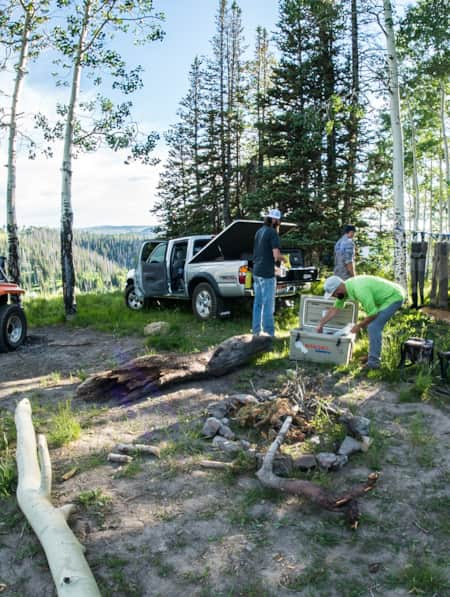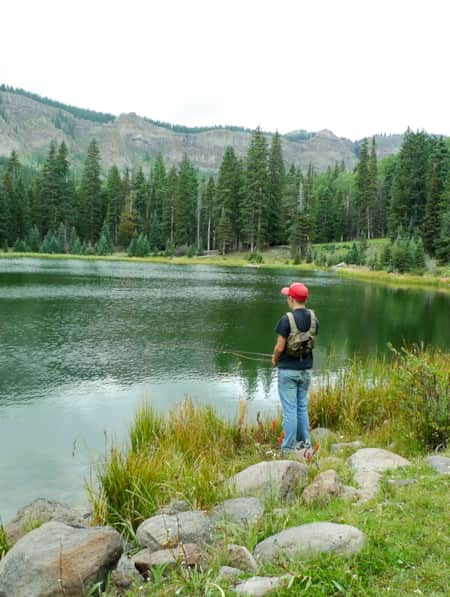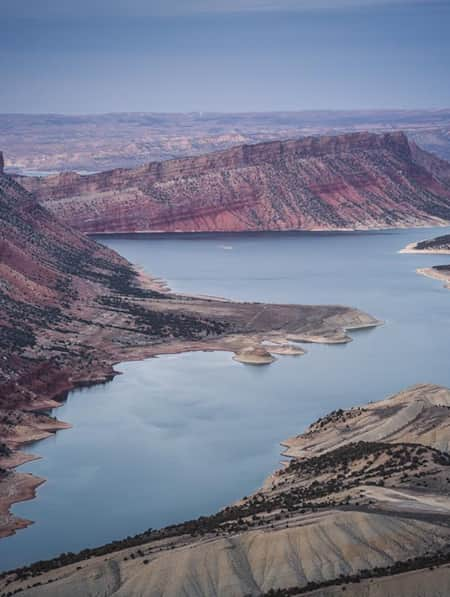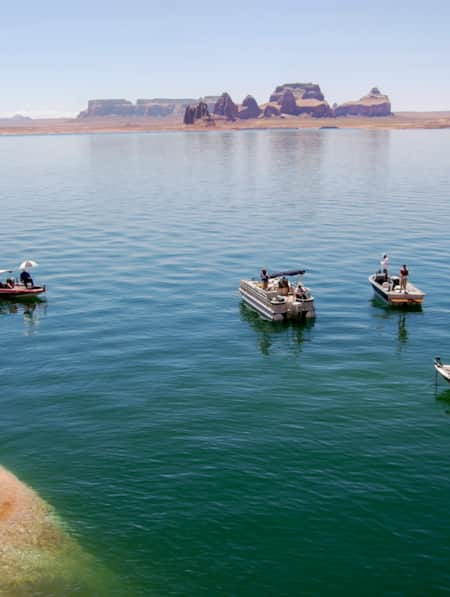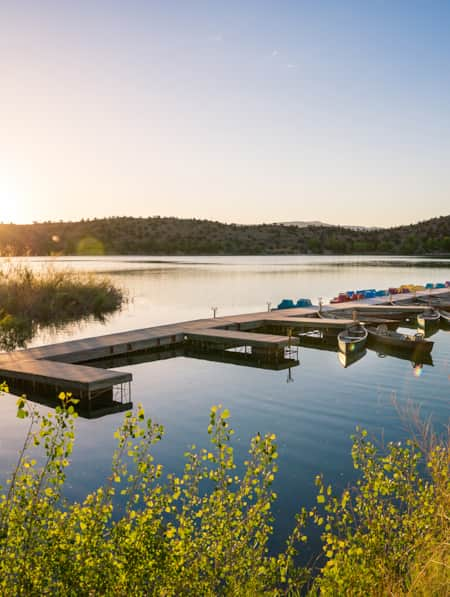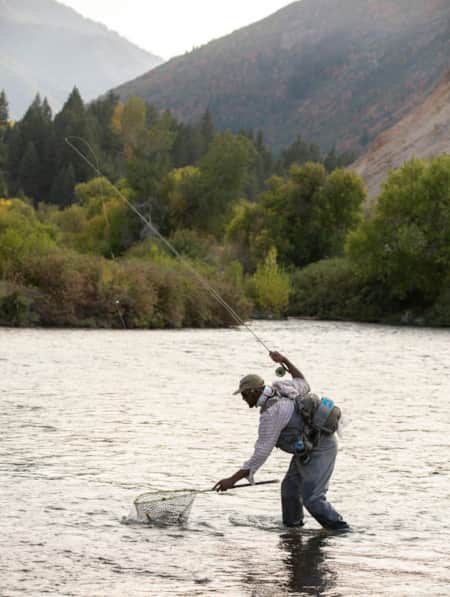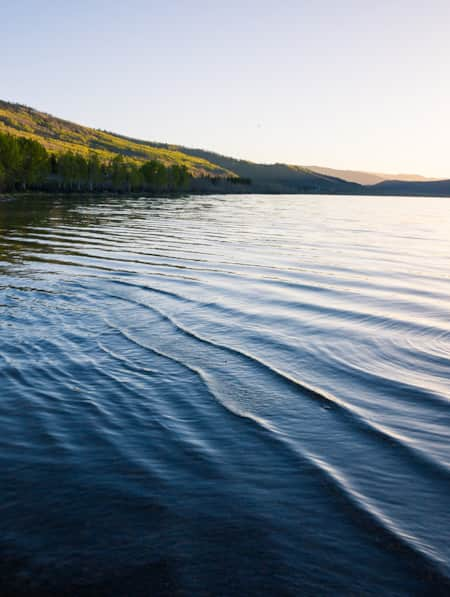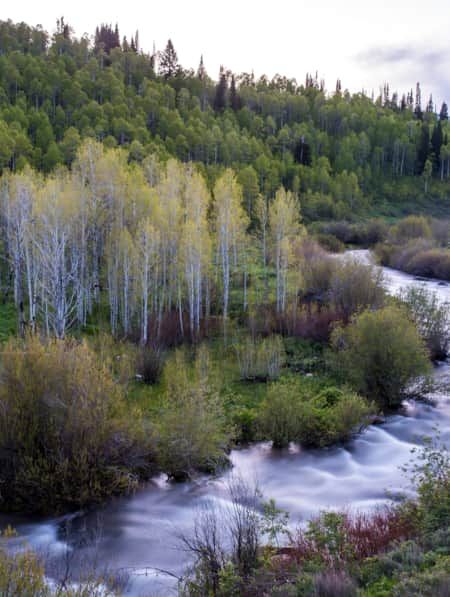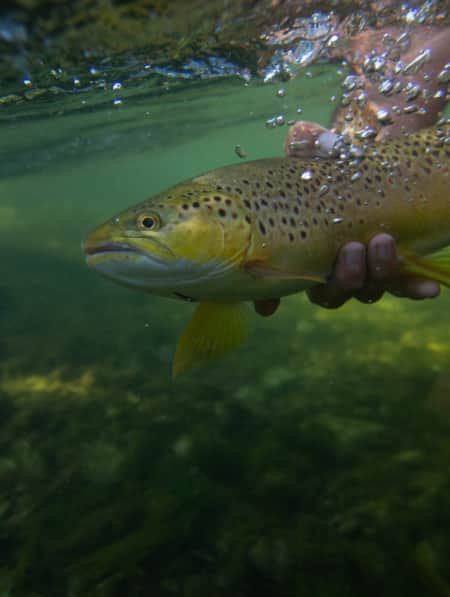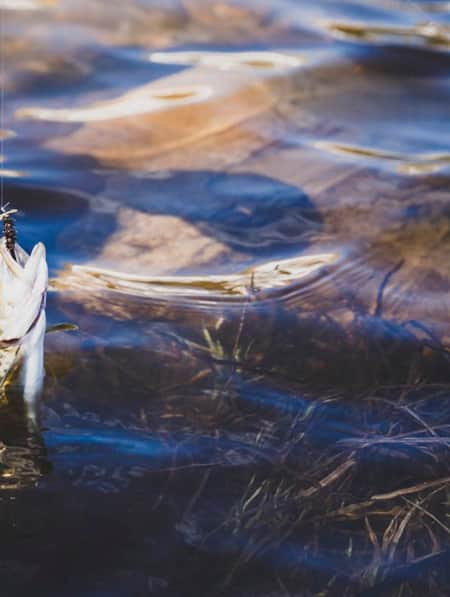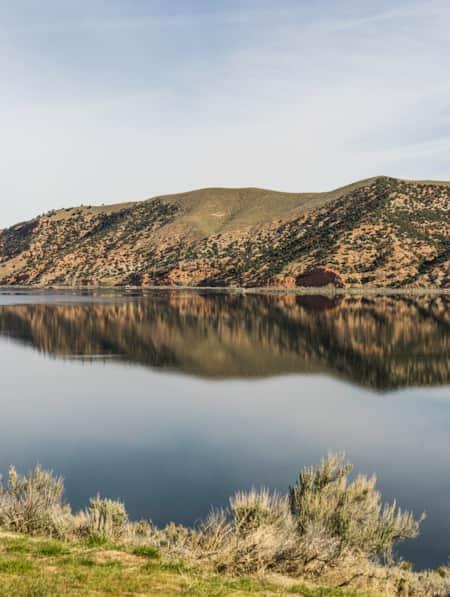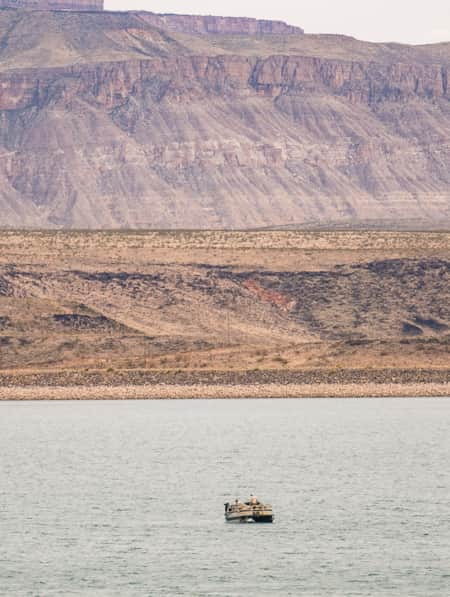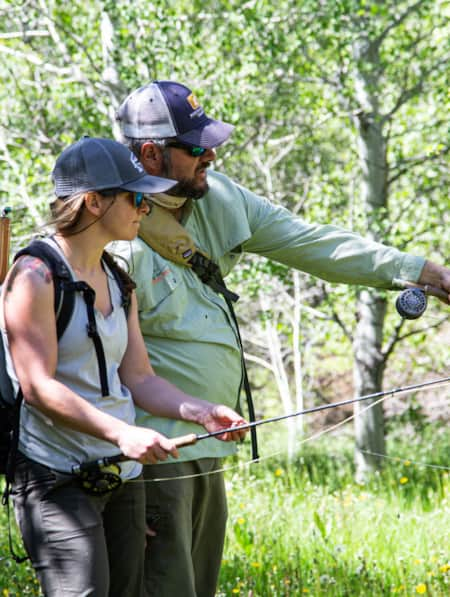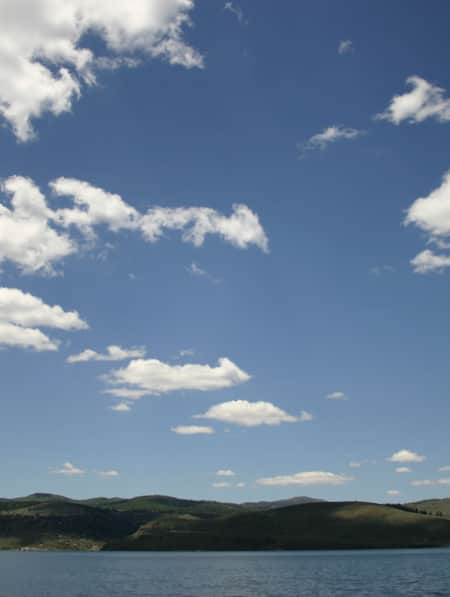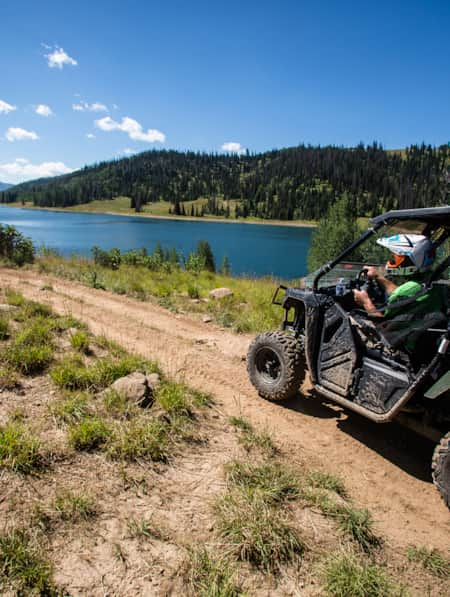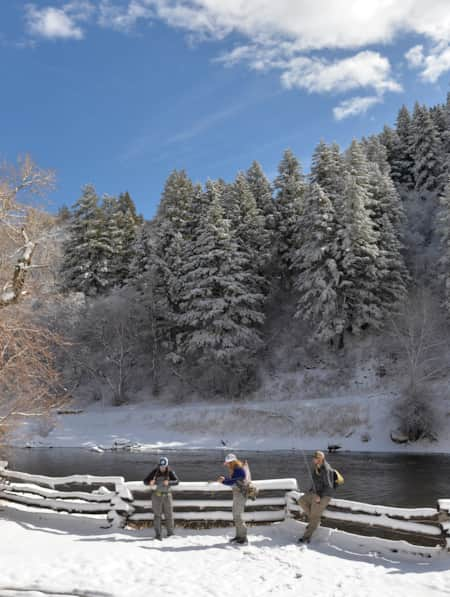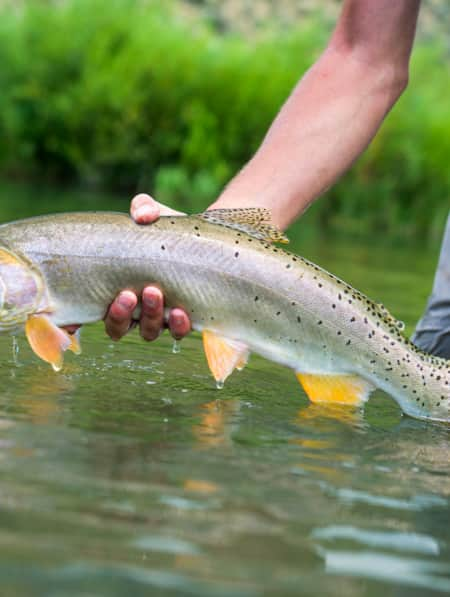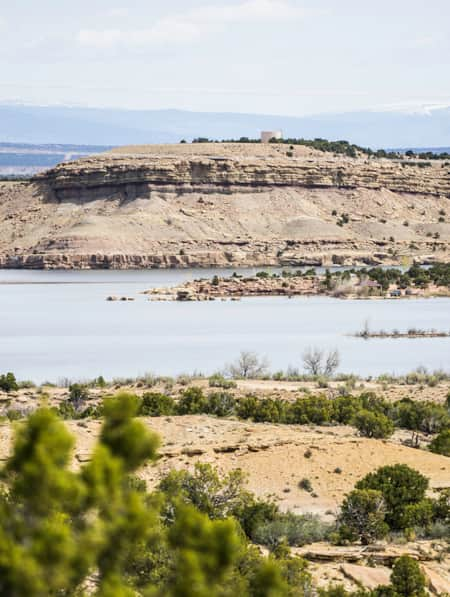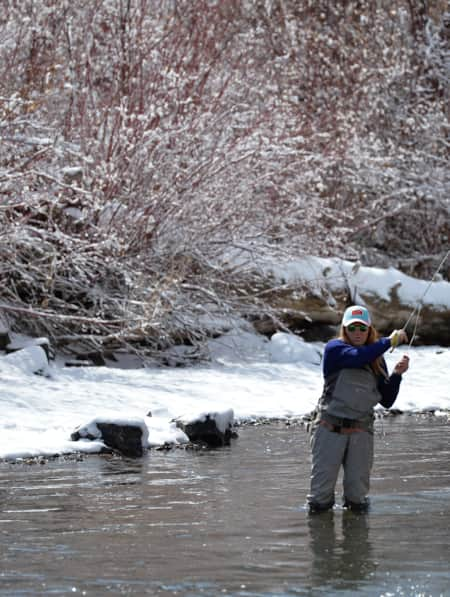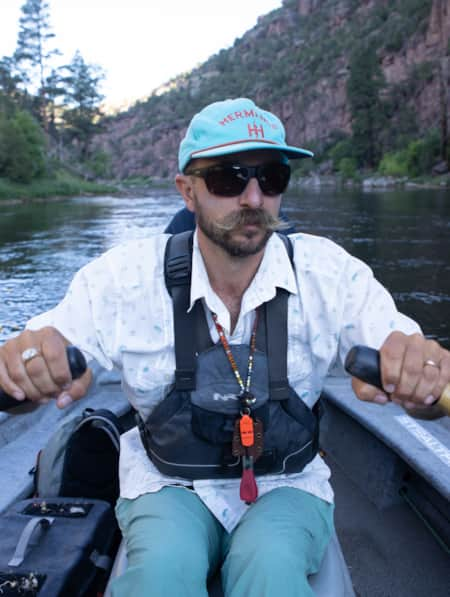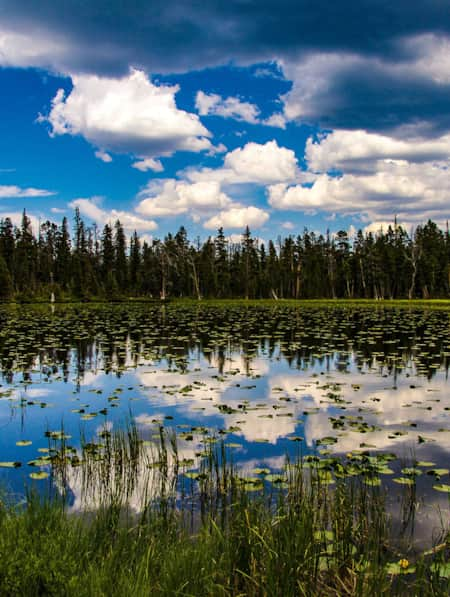- Home
- Things To Do
- Fishing
- Fishing Fremont River
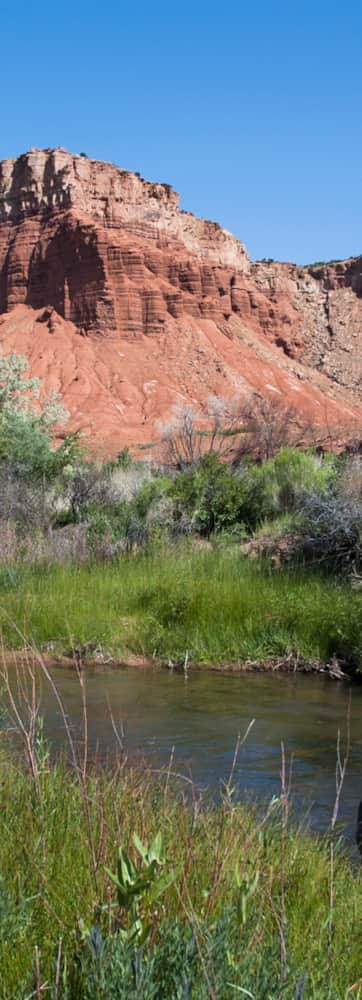
Fishing Fremont River
- Weather: Mostly Sunny, 49F
Fish Lake Plateau rises a few miles north of the hoodoos, pinnacles, and arches of Capitol Reef National Park. Nested within the high desert uplift are a few stillwaters that give life to the desert valleys below — this is where the Fremont River’s story begins.
The Fremont is a tailwater fed by a couple of streams worth fishing, if you are already in the area. Seven-mile Creek, which feeds Johnson Valley Reservoir from the north, houses a healthy population of brook trout and cutthroat trout. Look for deep pools, undercuts and shaded sections of the creek to sneak in a cast with a rod recommended in the zero to three-weight class. Johnson Valley Reservoir is an interesting ditch. Tiger musky and trout cohabitate, while cruising the banks looking for an opportunistic meal. Stories of stripping small wooly buggers for trout and coming up with a 30+ inch tiger musky keep anglers guessing what might be on the end of their line.
The Fremont is released from Johnson Valley Reservoir and winds 8 miles downstream towards its second impoundment, Mill Meadow Reservoir. Be prepared to battle dense brush and casting obstructions when fishing this middle section for small rainbow and brown trout.
See the Utah Division of Wildlife Resources Fremont River Fishing Report and more information.
Historically, the section below Mill Meadow has held some substantial trout. The river descends the plateau towards the town of Bicknell where springwater cools the flow and adds some much-needed depth to the river. Presently, the most productive part of the Fremont begins at Bicknell Bottoms and continues towards the town of Torrey. There are few miles of water to fish in this section before it picks up color, but this is notorious big fish water. Pull out the streamer box and strip meat silty undercut banks or fish dry dropper with an ant and zebra midge. Or you might want to rig up some mayfly and chironomid nymphs and plunge the deep holes.
Discover More
-

A Local’s Guide to Logan: Northern Utah’s Outdoor Adventure College Town
Written By Arianna Rees
3 minute read
Logan is teeming with some of the best arts, food and outdoor adventure opportunities in the state. Whether you’re passing through or just looking for new places to explore, here are some of the best ways to experience Logan.
-

A Weekend Well Spent at Scofield State Park
Written By Matcha
4 minute read
Enjoy some of the best trout fishing in Utah while spending a quiet weekend nestled in the spectacular Manti-La Sal Mountains at Scofield State Park. Sitting at 7,600 feet above sea level it a great spot to enjoy cooler temps in the summer with splashing around in the reservoir.
-

Alpine Fishing Above the Red Rock Landscapes of Southern Utah
Written By Visit Utah
2 minute read
Sitting just outside of Capitol Reef National Park, this 11,000-foot peak offers views of the surrounding red canyons and desert-like region. In contrast, Boulder Mountain is heavily forested and home to more than 80 lakes, ponds, and reservoirs. With an average rainfall multiple inches more than the lower regions, the area makes for some surprisingly good fishing.
-

An Old Favorite Fishing Hole at the Flaming Gorge Reservoir
Written By Dan Potts
6 minute read
Visit Utah columnist Dan Potts takes us to his "secret" fishing hole on Utah's Flaming Gorge Reservoir, one of the world's most diverse fisheries set among the brilliant red rock walls of Red Canyon in the easternmost corner of the state. Along the way, Dan takes us through some of his favorite landscapes on the drive to and from Salt Lake City.
-

Angling Secrets: How and Where to Catch Fish on Lake Powell
Written By Visit Utah
3 minute read
Read expect advice on when and where in Lake Powell to get the prized fish you're chasing.
-

Bear Lake Monster Winterfest
Written By Ben Whisenant
8 minute read
It all started decades ago with the “Cisco Disco” and has grown to include a polar plunge, chili cookoff and winter festival known as the Bear Lake Monster Winterfest.
-

Enjoying the Simple Pleasures of Lake Life on Palisade Reservoir
Written By Visit Utah
4 minute read
Utah’s beautiful Palisade Reservoir is an oasis of serene water in the central part of the state, a perfect getaway for paddling, fishing, swimming and camping.
-

Finding Solitude on the Provo River
Written By Matcha
Get expert advice on Provo River fishing, recreation and relaxation. Add the Provo River to your next Utah itinerary!
-

Fishing Fish Lake
Written By Matcha
5 minute read
The largest natural mountain lake in Utah, Fish Lake sits at more than 8,800 feet of elevation, which makes for pleasant weather all summer long. Located near Richfield, Utah, the lake has everything you need for a relaxing summer getaway.
-

Fishing Northern Utah's Logan River
Written By Matcha
Why do serious fly fishers flock to Northern Utah’s Logan River? Fishing spots with rainbow and brown trout in our freestone dream streams. Plan your adventure!
-

Fly Fishing Guide to The Green River Less Traveled
Written By Visit Utah
5 minute read
If you are in the Flaming Gorge area and fish, even just a little bit, you shouldn’t leave without spending at least one day in your waders throwing a line across the blue-ribbon waters of the Green River.
-

Fly Fishing the Uinta Mountains
Written By Matcha
The Uinta Mountains are one of Utah’s top fly fishing destinations. Learn where to go and how to land that trophy trout, then plan your own fly fishing getaway.
-

Get to Know Echo State Park
Written By Matcha
4 minute read
Situated at 5,560 feet above sea level, just north of Park City, lies Echo State Park. Watersports are king here, and whether you kayak, paddleboard, or boat, it’s a perfect place to get out on the water.
-

How to Have the Perfect Weekend on the Water at Quail Creek State Park
Written By Matcha
4 minute read
Just 15 miles north of St. George and even closer to the town of Hurricane, Quail Creek State Park offers warm water and mild weather year round. There’s plenty to do out on the water, and the gorgeous setting is sure to impress.
-

In Search of the Yellowstone Cutthroat
Written By Sandra Salvas
7 minute read
Fishing for what counts in Utah’s remote Raft River Mountains.
-

Panguitch Lake's Literal "Big Fish"
Written By Matcha
People have been traveling to fish at Panguitch Lake for a long time. Legend has it this popular high mountain fishery in Southern Utah was named by the Paiute people who once frequented the area and it translates to mean “big fish.”
-

Riding the Arapeen OHV Trail of Central Utah
Written By Ben Whisenant
6 minute read
Looking for the best off-roading trails in Utah? You have to try the Arapeen OHV Trail, featuring hundreds of miles of scenic backcountry trails in Central Utah. Start planning now!
-

Snowfield and Stream
Written By Brett Prettyman
7 minute read
The ski lift may be closer, but the Provo River, one of the best fisheries in Utah and the country, is mere minutes down the road from Sundance Mountain Resort.
-

Strawberry Reservoir: Ripe for All Kinds of Anglers
Written By Matcha
With trophy-sized cutthroats and rainbows, large populations of aquatic insects and ample wade fishing opportunities, Strawberry Reservoir — affectionately called "the Berry" — really does have something for every angler’s tastes.
-

The Most Scenic Trophy Trout Destination
Written By Matcha
Flaming Gorge, Utah is one of the world’s best places to fish for trout. Awe-inspiring scenery and abundant fish attract anglers from all over. Check it out!
-

The Story of Starvation Reservoir
Written By Matcha
Sprawling waters and local legends at Fred Hayes State Park at Starvation.
-

The Story of Utah Women Flyfishers
Written By Brett Prettyman
4 minute read
Get to know Heidi Lewis, founder of Utah Women Flyfishers. More than 300 women meet monthly to tie flies, practice casting at the park, plan trips and more.
-

The Wayward Path of a Utah Fly-Fishing Guide Led Straight to the Green River
Written By Brett Prettyman
5 minute read
Colby Crossland isn’t quite sure how he ended up a guide on one of the country’s best fly-fishing destinations, but he knows the perks are worth the tangles.
-

Touring the Sheep Creek and Spirit Lake Scenic Backways of Flaming Gorge National Recreation Area
Written By Matcha
4 minute read
Explore the Utah Sheep Creek backways within the Flaming Gorge National Recreation Area. Experience awe-inspiring scenery, rock formations, and wildlife.
-

Wild Heber: Close-to-Home Adventure
Written By Kristen Pope
8 minute read
Just 45 minutes from Salt Lake City, Heber Valley’s state parks and national forest lands offer a world of adventure. Hike, bike, camp, kayak, watch wildlife and reel in blue-ribbon trout while learning about nature and how to protect it.

